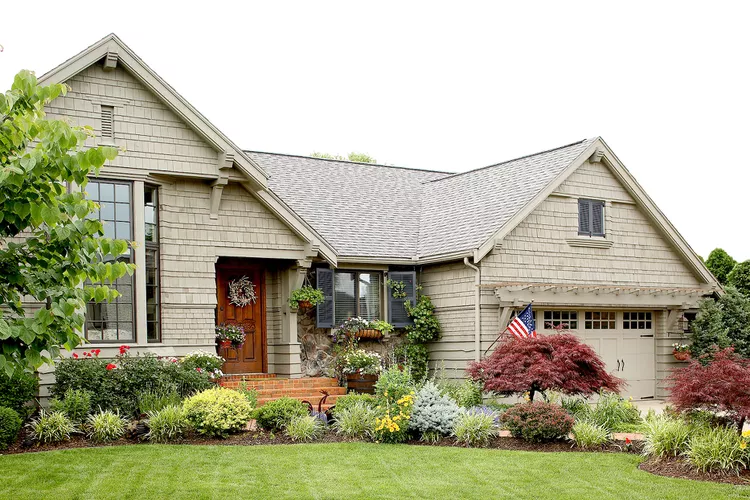Curb appeal landscaping is at the top of many gardeners' to-do lists. Maximizing your yard's attributes and minimizing its problems to create a beautiful street-side view doesn't have to be difficult, daunting, or expensive. There can be some fantastic pay-offs, like increasing the resale value of your home: 92% of realtors recommend that sellers improve their curb appeal before listing their home, with standard lawn care resulting in a 217% return on investment. No matter your style or plant preferences, these tips will help transform your front yard into a beautiful, attractive space without breaking the bank or tearing up your entire property.
1. Consider the House
Lots of people look at the size of the lawn or the shape and slope of the front yard, but sometimes you can overlook a critical piece of the puzzle: Your actual house. The design and architecture of your home can be a real asset when you're creating curb appeal landscaping. For example, a cottage-style landscape compliments a country or farmhouse look, while a spare, minimalist garden would set off a more modern building.
2. Think About Proportions
If you have a large house with a flat front, pretty little flowers aren't the plants to use for landscaping curb appeal. Instead, use plants and repetition (midsize shrubs to line a path, for example, or a row of shrubs in front) that are inspired by and complement the shape and size of the house. You'll immediately see the impact of a plant grouping that reflects the shape and lines of the house and front walkways.
3. Use Hardscaping
Use secondary hardscape elements to help improve curb appeal. A deep sidewalk, for example, offers an opportunity for a wider flower bed as an accent. A bench provides a place for a gathering of shrubs and perennials. Think about what's already there (or what could be added) and how to make it look its best.
4. Point Out the Pathway
Landscaping curb appeal is ultimately about moving to the front door in a welcoming way. Make the transition natural and intuitive so guests know where to go. That may include a bend in a walkway (with the doorway still in sight) or planters on either side of a curve.
5. Turn to the Color Wheel
The color of your house should be considered when choosing plants for landscaping curb appeal. For example, a blue house feels calm and collected, accented by a collection of purple, pink, yellow, and white flowers. Red trim will pop with orange, bright yellow, and red flowers.
6. Include Big Plantings Where Appropriate
Most of the time, people see your house (and judge its curb appeal) quickly, either on a walk or as they drive by. Use large shapes and masses of plants that are attractive from a distance to anchor your overall design. Just be careful to avoid blocking windows or doors with plants that will get too large.
7. Keep a Low-Maintenance Garden
Even if you love gardening and all of the upkeep your plants need, an elaborate garden could be a negative for a potential buyer if you ever plan on selling your house. Potential homeowners who aren't gardeners will be discouraged by large beds or plants that create lots of natural litter, like petals or seed pods. Keep it clean: Petunias that won't litter petals everywhere, for example, and shrubs that don't require much tender loving care.
8. Think Through the Seasons
A landscape that goes dormant in the winter will look uninviting. The best curb appeal ideas include structural elements such as trees and shrubs, as well as materials that look good in spring, summer, autumn, and winter.
You don't have to start from scratch with landscaping curb appeal; you can effectively dress up your home's exterior in a way that fits your style while also appealing to others by adding a few extra elements. Use your home as a base for a full garden that adds to the beauty of the landscape.
More Ways to Boost Curb Appeal
Landscaping is one of several projects to do to boost your home's curb appeal, especially if you're considering selling it in the near future. When guests approach your home, make sure your entryway is as welcoming as the greenery in front of your house. Paint your shutters for a quick refresh that will instantly update the look of your home. If you plan to paint your entire house, use colors for the siding and trim that will appeal to most buyers or that you can live with for a long time. Even something as simple as updating your front door hardware can make a big impact on visitors to your home.




















